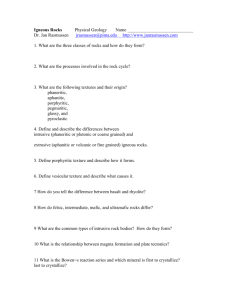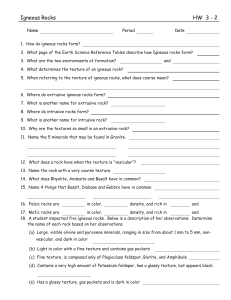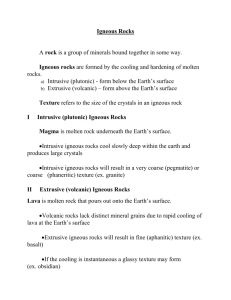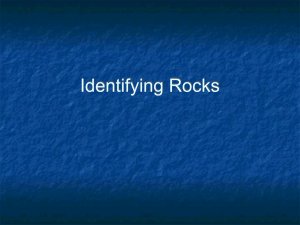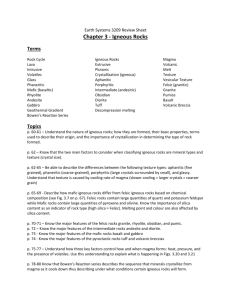Igneous Rocks Lab Name
advertisement
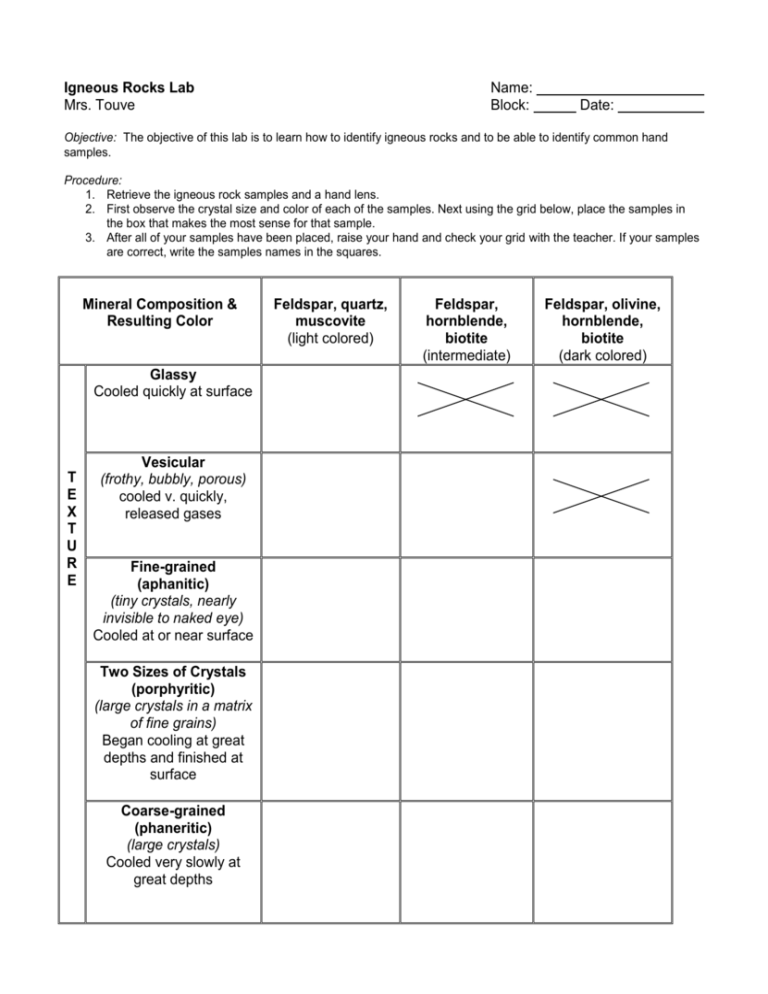
Igneous Rocks Lab Mrs. Touve Name: Block: Date: Objective: The objective of this lab is to learn how to identify igneous rocks and to be able to identify common hand samples. Procedure: 1. Retrieve the igneous rock samples and a hand lens. 2. First observe the crystal size and color of each of the samples. Next using the grid below, place the samples in the box that makes the most sense for that sample. 3. After all of your samples have been placed, raise your hand and check your grid with the teacher. If your samples are correct, write the samples names in the squares. Mineral Composition & Resulting Color Glassy Cooled quickly at surface T E X T U R E Vesicular (frothy, bubbly, porous) cooled v. quickly, released gases Fine-grained (aphanitic) (tiny crystals, nearly invisible to naked eye) Cooled at or near surface Two Sizes of Crystals (porphyritic) (large crystals in a matrix of fine grains) Began cooling at great depths and finished at surface Coarse-grained (phaneritic) (large crystals) Cooled very slowly at great depths Feldspar, quartz, muscovite (light colored) Feldspar, hornblende, biotite (intermediate) Feldspar, olivine, hornblende, biotite (dark colored) Igneous rocks can be identified on the basis of where they form, and this affects their texture and crystal size. Use the chart on the previous page to group similar terms in the chart below. Extrusive Intrusive Volcanic Forms at Earth’s Surface Plutonic Aphanitic (fine) Phaneritic (coarse) Forms Deep Underground Analysis Questions. 1. How are igneous rocks classified? 2. Slow cooling produces (small / large) crystal size. Another name for this type of texture is: 3. Fast cooling produces (small / large) crystal size. Another name for this type of texture is: 4. (Extrusive / Intrusive) igneous rocks cool slowly and form . 5. (Extrusive / Intrusive) igneous rocks cool quickly and form . 6. Out of the igneous rock samples you handled, which rock do you think cooled the fastest and why? 7. Which rock do you think cooled the slowest and why? 8. Granite and Rhyolite have essentially the same composition, yet they look very different. Why? 9. Igneous rocks with porphyritic texture underwent two stages of cooling. What do you think caused these rocks to finish their cooling at or near the surface? 10. In rocks where crystals and specific minerals cannot be distinguished (Obsidian, Pumice, & Scoria), how do you think geologists determine the mineral composition?
